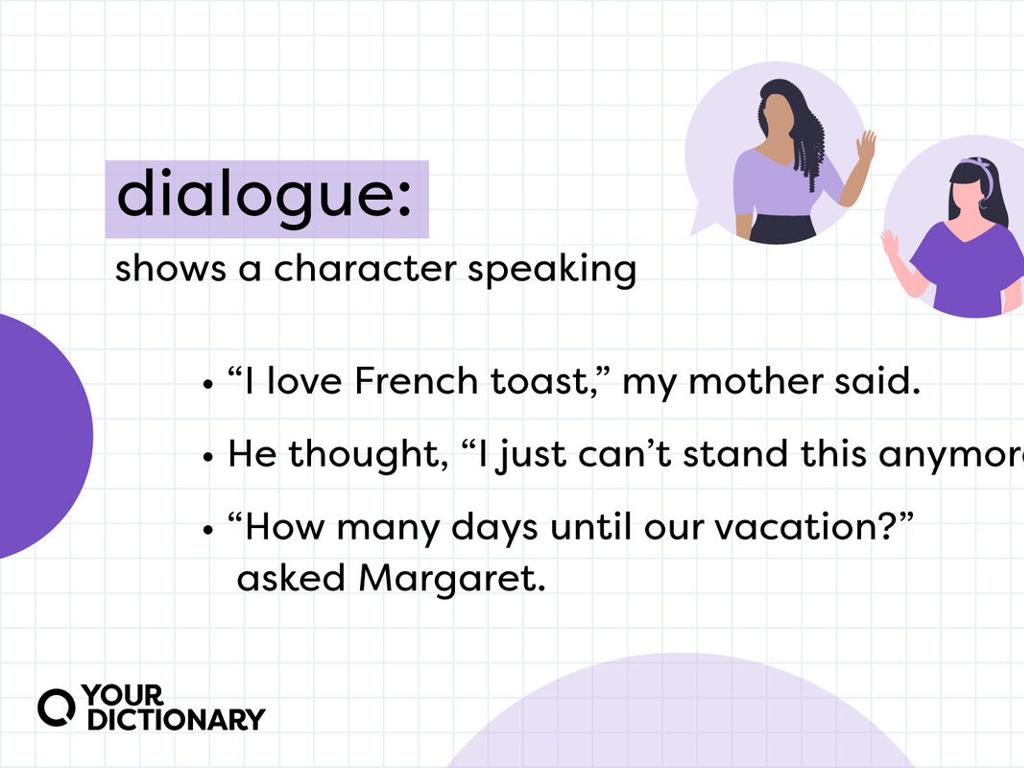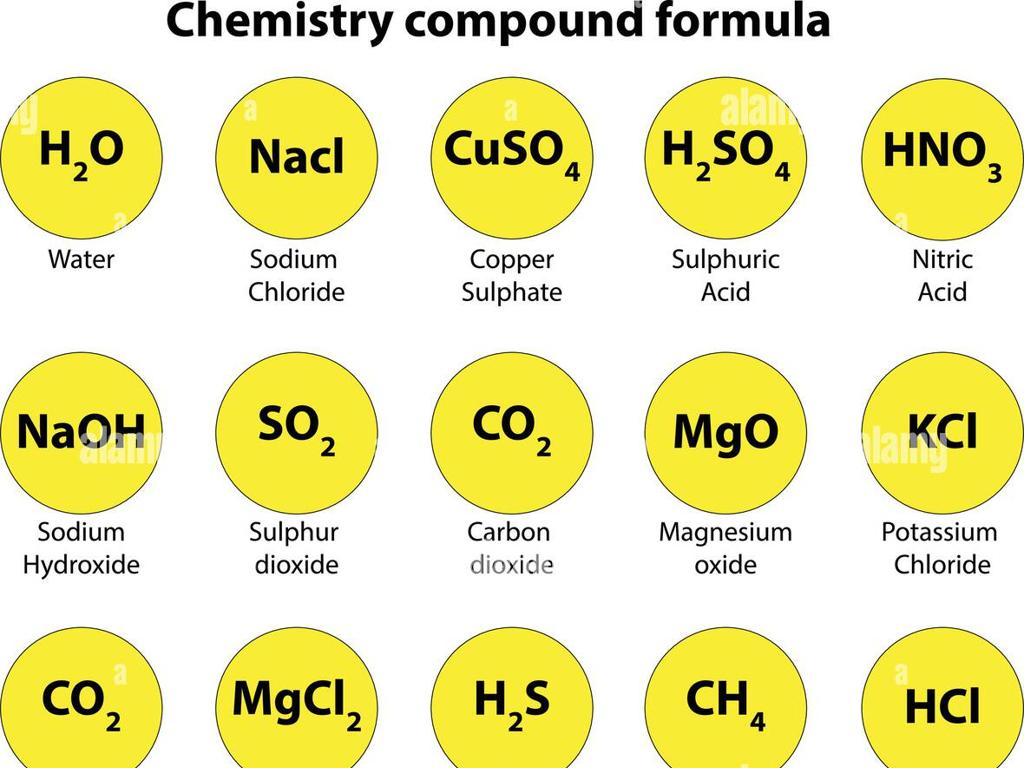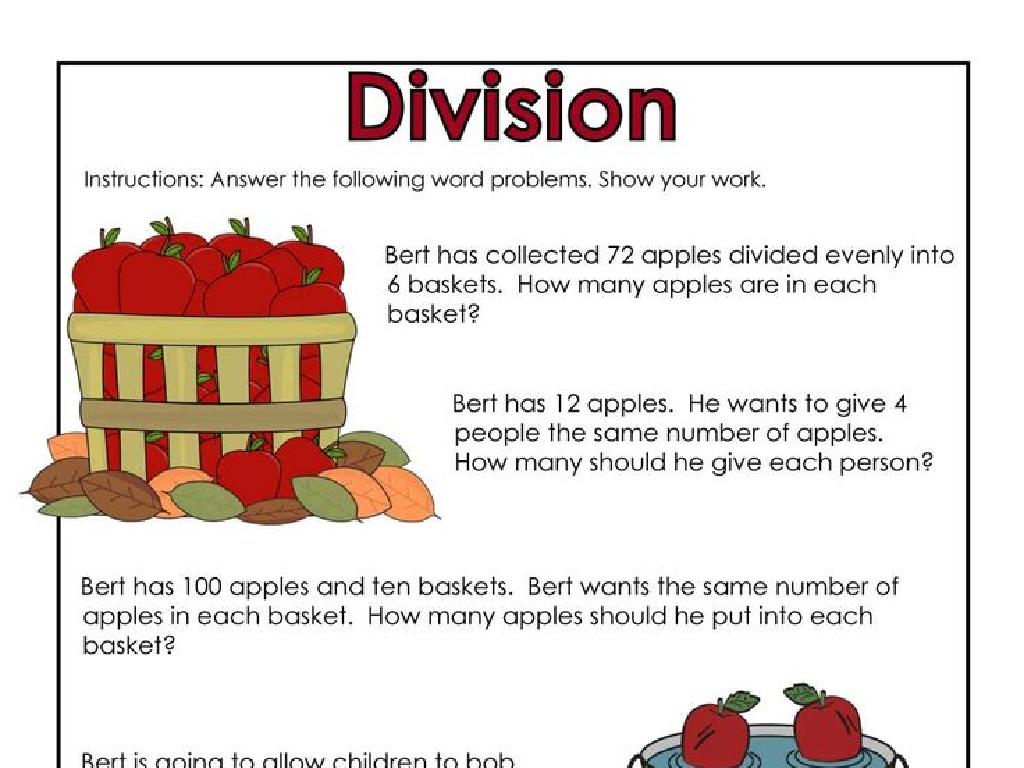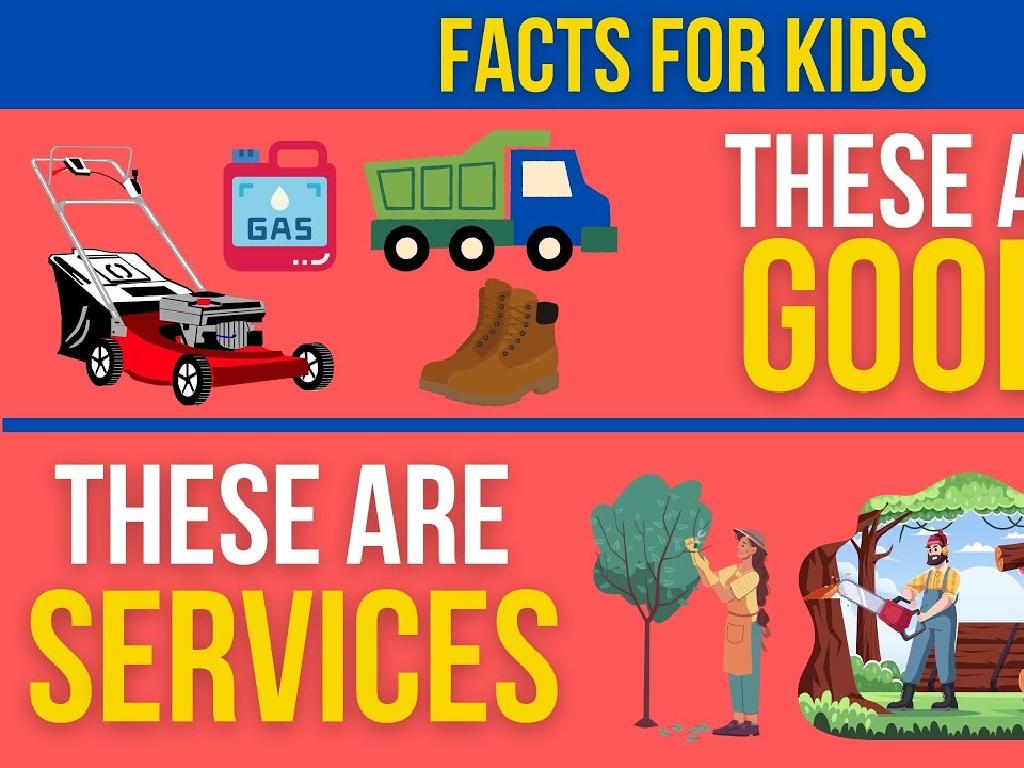Multi-Step Addition And Subtraction Word Problems
Subject: Math
Grade: Fourth grade
Topic: Multi-Step Word Problems
Please LOG IN to download the presentation. Access is available to registered users only.
View More Content
Multi-Step Addition & Subtraction
– Unpack multi-step problems
– Steps to solve complex problems
– Read carefully, identify key numbers and operations
– Real-life importance of multi-step
– Skills help in budgeting, planning events, etc.
– Class activity: Solve a sample problem
– Example: If you buy 3 toys priced $15 each and return 1, how much did you spend?
|
This slide introduces students to the concept of multi-step word problems, focusing on addition and subtraction. Begin by explaining how to break down a problem into manageable steps. Emphasize the importance of reading the problem carefully, identifying all the relevant numbers, and determining the operations required to find the solution. Discuss how these skills apply to real-world scenarios, such as managing money or planning. The class activity will involve a practical example where students apply the steps they’ve learned to solve a problem. Provide guidance and encourage students to explain their reasoning as they work through the activity. This will help them understand the process and build confidence in tackling multi-step problems.
Understanding Multi-Step Word Problems
– Definition of multi-step problems
– Problems needing several steps to solve
– Each step is like a cake layer
– Just as layers make a whole cake, every step in a problem is crucial
– Examples from daily life
– Buying groceries, planning a party
– Strategies to solve them
– Read carefully, identify operations, solve in order
|
Multi-step word problems are mathematical puzzles that require a series of computations to reach a solution. They’re like a cake with multiple layers; each layer, or step, builds upon the previous one to complete the whole. In everyday life, we use multi-step problem-solving when managing money, planning events, or even during play. To tackle these problems, students should read the question carefully, determine what operations are needed (addition, subtraction, etc.), and solve each part in the correct sequence. Encourage students to write down each step and check their work as they go. This slide aims to familiarize students with the concept and prepare them for practical examples.
Key Words in Multi-Step Problems
– Addition signal words
– Words like ‘total’, ‘sum’, ‘in all’ hint at addition
– Subtraction signal words
– ‘remain’, ‘left’, ‘less’ often mean subtraction
– Deciding the right operation
– Clues in the question guide us on which math to use
– Practice with examples
– Let’s solve a problem together using these clues
|
This slide is aimed at helping students identify key words in word problems that indicate whether to add or subtract. Emphasize the importance of understanding these words to determine the correct operation for solving multi-step problems. Provide examples and guide students through the process of identifying these clues within the context of a problem. For instance, ‘Sally had 15 apples, and she bought 10 more. How many does she have in all?’ uses the word ‘in all’, signaling addition. Encourage students to practice by reading problems carefully and underlining key words that help decide the operation. During class, work through several problems together, and then assign different problems to small groups for collaborative practice.
Let’s Solve a Word Problem Together!
– Read the problem aloud as a class
– Discuss and list the steps to solve
– What operations do we use? What do we solve first?
– Solve the problem step by step
– Use addition or subtraction as needed
– Review our solution together
– Ensure our answer makes sense in context
|
This slide is designed for an interactive class activity where the teacher and students will work together to solve a multi-step word problem. Start by reading the problem aloud to the class, then engage the students in a discussion to identify the necessary steps to find the solution. Encourage them to determine which operations to use and in what order. As you solve the problem step by step, involve the students in the process, asking for volunteers to contribute to each part of the solution. After arriving at an answer, review the solution as a class to ensure it makes sense and that the students understand each step taken. This activity will help reinforce their problem-solving skills and their ability to tackle multi-step problems.
Your Turn: Tackling Multi-Step Problems
– Read the problem carefully
– Write down the necessary steps
– List steps like: find totals, compare amounts, etc.
– Solve the problem on your own
– Use addition or subtraction as needed
– Check your work after solving
– Ensure your final answer makes sense
|
This slide is designed to engage students in independent problem-solving. Encourage them to read the word problem thoroughly and understand what is being asked. They should jot down a plan of action by listing the steps they need to take, such as identifying all the amounts given, determining what needs to be added or subtracted, and comparing quantities. After they’ve attempted to solve the problem, remind them to review their work to ensure their solution is reasonable and aligns with the question. Provide guidance on common strategies for solving multi-step problems and encourage them to think critically about each step. Offer several practice problems of varying difficulty to cater to different skill levels within the class.
Pair & Share: Multi-Step Problem Solving
– Pair up and compare solutions
– Discuss differences in steps
– Recognize multiple solution paths
– There’s often more than one way to solve a problem, and that’s okay!
– Reflect on the problem-solving process
– Think about what strategies worked best for you and why.
|
This slide is designed to facilitate a collaborative learning experience where students are encouraged to work in pairs and engage in discussions about their problem-solving approaches to multi-step addition and subtraction word problems. The activity aims to highlight that different methods can lead to the same correct answer and to reinforce the understanding that problem-solving can be flexible. Teachers should guide students to articulate their thought processes, listen to their partner’s reasoning, and consider alternative strategies. This exercise not only helps students to deepen their understanding of mathematical concepts but also develops their communication and critical thinking skills. Teachers should circulate the room, observe the discussions, and provide assistance as needed. Possible activities include comparing different word problems, discussing why certain steps are taken, and reflecting on the effectiveness of various strategies.
Group Activity: Problem-Solving Relay
– Form small problem-solving groups
– Each student solves one step
– Pass the problem to the next student
– Collaborate for the final answer
|
This group activity is designed to encourage teamwork and collaborative problem-solving skills. Divide the class into small groups, assigning a multi-step addition and subtraction word problem to each. Students will take turns, with each one solving a step of the problem before passing it on to the next group member. This relay approach ensures that each student contributes to the solution process. As a teacher, prepare several problems so that groups can rotate and solve different ones if time allows. Possible activities could include real-life scenarios such as planning a party with a budget, or a school field trip requiring the calculation of distances and times. The goal is to reinforce the concept of multi-step problem-solving and to demonstrate the importance of each step in reaching the correct final answer.
Review and Reflect: Multi-Step Problem Solving
– Reflect on successful strategies
– Which strategies helped you solve problems effectively?
– Discuss feelings during problem-solving
– Solving problems step-by-step can be rewarding and challenging.
– Emphasize checking our work
– Double-checking answers ensures accuracy.
– Why review and reflection matter
|
This slide aims to encourage students to think critically about the problem-solving process. Ask students to share the strategies that helped them solve multi-step problems, such as breaking down the problem into smaller parts or using visual aids like drawing. Discuss how it felt to tackle problems in a step-by-step manner; some may have found it methodical and clear, while others might have experienced it as complex. Stress the importance of reviewing and checking work to catch mistakes and ensure the solution is correct. Highlight that reflection after solving problems can help students understand their own learning process and improve their problem-solving skills for future challenges.
Homework Challenge: Mastering Multi-Step Problems
– Take home a multi-step problem worksheet
– Practice solving problems independently
– Note down your solution methods
– Jot down how you approached each step
– Get ready to discuss your answers
– Think about why you chose those methods
|
This homework assignment is designed to reinforce students’ understanding of multi-step addition and subtraction word problems. The worksheet should contain a variety of problems that require students to apply different strategies they’ve learned in class. Encourage students to solve the problems step-by-step and write down their thought process for each step. This will help them to articulate their methods during the next class discussion. Provide guidance on how to break down complex problems into manageable steps and remind them to check their work for accuracy. In the next class, facilitate a discussion where students can share different approaches to the same problem and learn from each other’s strategies.
Class Activity: Math Scavenger Hunt
– Solve hidden multi-step problems
– Each solution leads to the next clue
– Teamwork to find the final treasure
– Enhance problem-solving skills
– Practice addition and subtraction in a fun, interactive way
|
This activity is designed to make learning multi-step addition and subtraction word problems engaging through a scavenger hunt. Hide problems around the classroom, with each solved problem providing a clue to the next location. Students will work in teams, fostering collaboration and communication. The final treasure could be a small reward or a congratulatory message. Ensure that the problems vary in difficulty and involve multiple steps. Possible activities: 1) Decoding a secret message with numbers, 2) Solving a riddle that leads to a book with the next problem, 3) Finding a hidden puzzle piece that completes a math problem, 4) Using a solved problem to unlock a box with the next clue, 5) Creating a map where each solved problem provides a direction to the next clue. This will help students apply their knowledge in a practical and enjoyable manner.






